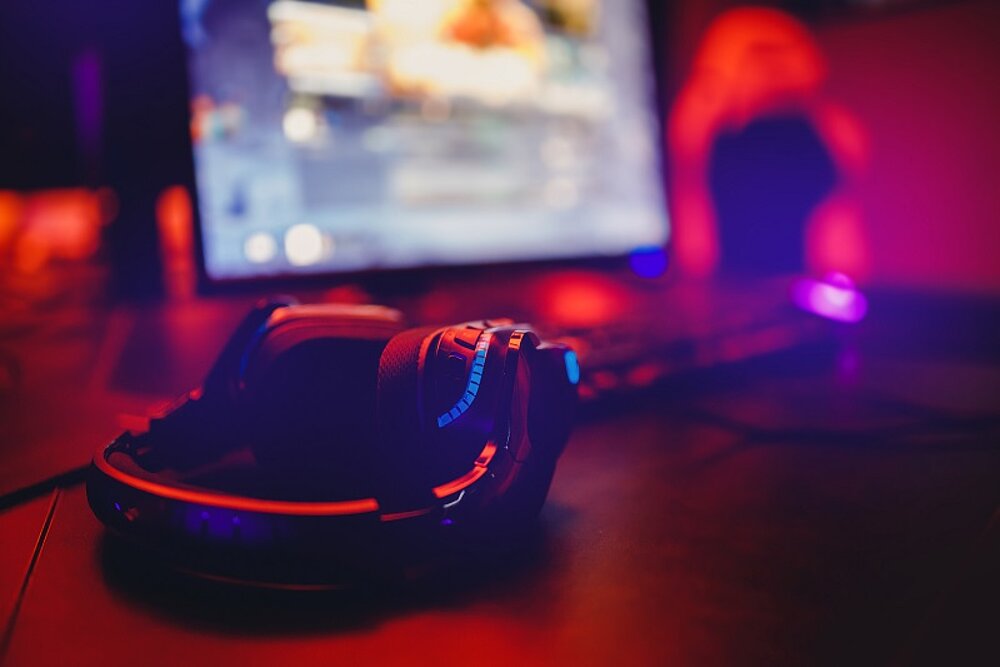Find out today what the legal world will be talking about tomorrow.

Hardly any other industry is growing faster than Esports. Once clichéd as pale nerds, the professional gamers have now become real idols of millions of international fans with billions of clicks on various web portals. Even though the gaming industry is becoming increasingly professionalised and, above all, monetised (according to the EU Commission, worth 17 billion euros1 in Europe alone), it is still in a state of flux.
To turn reach into a sustainable business model, sponsorship is essential for many teams, organisers and companies alike. However, as the case of the Saudi Arabian prestige project “Neom” shows, the Esports market ticks differently than the classic sports.2 Leading to the question, if the Esports industry is not like any other, what is there to consider?
The start: generating reach and brand loyalty
The most important currency at the beginning of every business is the users, the fans, the subscribers. It is known from traditional (analogue) business developments - from the new ice cream parlour in the street to the globally active car manufacturer - that during growth, until a critical threshold is reached, the focus is primarily on gaining new customers. Only after this critical threshold is crossed, when a certain strength of customer loyalty and brand power is reached, can the company afford to raise prices or enter into other commercial deals to increase profits. The golden rule for reaching this threshold is: the monetary gain from such deals must be greater than the loss of customers (or in the digital world: loss of subscribers, users, fans). In the growth phase, this ratio is the other way around.
Esports has a natural advantage when it comes to measuring customer loyalty: in the digital world, customer behaviour and customer base can be measured better than anywhere else, provided that legal data protection requirements are observed. The most important indicators in Esports are probably the number of players, views or streams, subscriptions and user interaction. When a platform, a team or an organiser has generated a customer base and a certain reach can be determined. But how do I generate brand loyalty?
Brand loyalty through brand image protection
Here we can still learn from the analogue, classic market, in this case the classic sports. At the centre of a brand is its image; only if this is particularly good can fans identify with it. The higher the identification effect, the more valuable and binding the brand and thus the more attractive it is for sponsorship.
If an E-sports brand or a participating company is just being built up, it is important, as in the classic established sports industries, to protect the sponsors vis-á-vis the sponsored athletes, teams, clubs or other participants damaging the reputation of the sponsor or brand through their individual behaviour.
Therefore, it is elementary to keep an early exit from sponsorship open by means of appropriate contractual clauses. There are established circumstances, such as doping, socially unacceptable behaviour or lack of sporting success, which can trigger an immediate special right of termination, the reduction of sponsorship funds or early termination and which can be included in contracts.
A factor not to be underestimated: the community
Traditionally, reputation and brand protection is thought of from the sponsors' point of view.3 However, contractual protection clauses could also be used and make sense in favour of the teams. Misconduct on the part of the sponsors may be punished in the same way as their own brand-damaging
behaviour. Admittedly, in the tried and tested practice of (analogue) sport, this is usually limited to very special corporate developments or exclusivity violations by sponsors. In view of the diverse, ecologically and socially often more woke online community, however, it is quite conceivable on a broader scale.
A particularly good example of this in Esports is the already cited case of “Neom”: Initially, a Saudi Arabian Megacity “Neom” was to be created as a futuristic digital project with the participation of the game developers Riot Games and the tournament organiser Blast. Riot Games and later Blast (as well as others involved) left this project only one day after the sponsoring deal was announced. The reason: the fierce protests of the LoL community.4 This underlines the power of the users and gamers in E-sports, who continue to be the main currency and understand their Esports, their joint activities and the underlying worlds in many respects as an idealistic venture in which values and ideas (still) take precedence over profit maximisation.
By way of comparison, FC Bayern has been criticised for years for its cooperation with Qatar, but the cooperation hardly harms the brand’s reputation.5 This is because, among other factors, FC Bayern has crossed the golden threshold described above. Whether this can ever happen in the Esports community is at least questionable after “Neom”. In view of this, it seems almost inevitable to also protect the sponsored parties from damage to their brand image by the sponsors, even to select the portfolio of sponsors on the basis of the community’s opinions.
Reduce restraints, create a stable legal framework
The fact that there is a lot to be gained from sponsorship for Esports and the companies involved is shown by the many substantial and highly remunerated sponsoring deals. Intel recently invested over 100 million US dollars in the Electronic Sports League.6
Today, various big brands are still shying away from the step into the world of Esports. Among other things, there are still restraints due to the lack of international standards for a set of rules, a grey betting market, the participation of politically or regulatory difficult markets (such as Russia, China or Saudi Arabia) and the sometimes very young age of the Esports professionals. On the other hand, the latter is one of reasons for the great attractiveness of Esports, as it allows brands to tap into younger target groups in the long term.
While Esport players can create framework conditions on their own that strengthen trust in the seriousness of the industry from year to year, sponsors themselves have the right tool in their hands with brand image-protecting contractual clauses to protect themselves against risks. These therefore also play a central role in the initiation of business relationships.
Conclusion: Rethinking brand safety and building trust
It turns out that it is very worthwhile to include contractual clauses for Esport sponsorship that go far beyond the contractual standards known from classic sport and define what the respective parties expect from each other, which behaviours and developments can trigger contractual consequences and/or sanctions. Mutual protection is one of the keys to reducing restraints and taking Esports to the next level.
The central new element of these clauses in order to protect e-sports players can be the performance of the sponsor in the areas of diversity & environment. The Esports community with its determination strengthens the negotiating position of the teams. Here (contrary to what is known) it could prove true: It's not always the one who pays who calls the tune.
1 Source: https://ec.europa.eu/commission/presscorner/detail/de/ip_21_170 (last accessed 23.03.2021).
2 Source: https://esportsinsider.com/2020/08/blast-neom-terminated/ (last accessed 23.03.2021).
3 Source: https://www.ran.de/fussball/bundesliga/news/kritik-an-corona-experten-karl-lauterbach-die-netzreaktionen-zu-den-aussagen-von-bayern-trainer-hansi-flick-114234 (last accessed 23.03.2021).
4 Source: https://www.polygon.com/2020/7/29/21347587/riot-games-saudi-arabia-neom-partnership-league-european-championship-lec (last accessed 23.03.2021).
5 Sources: https://www.augsburger-allgemeine.de/sport/fc-bayern/Wegen-Katar-Kritik-FC-Bayern-verhaengt-Hausverbot-gegen-Fan-id57137426.html (last accessed 23.03.2021); https://miasanrot.de/2021-fcbayern-qatar-kritik-einordnung/ (last accessed 23.03.2021); https://de.statista.com/statistik/daten/studie/511008/umfrage/die-wertvollsten-marken-im-fussball/ (last accessed 23.03.2021).
6 Source: https://www.pcwelt.de/ratgeber/Warum-Intel-100-Millionen-US-Dollar-in-den-eSports-investiert-10788408.html (last accessed 23.03.2021).




